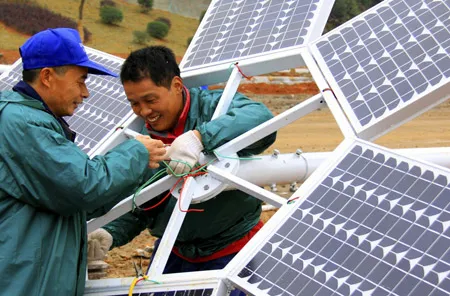
China leads the global renewable energy market
Still experiencing growth in its wind and solar markets, China remains the clear global renewable leader.
According to Ernst & Young, despite reaching US$243 billion worth of investments, some countries and technologies are finding the economic conditions deeply challenging.
The legacy of the global financial crisis continues to create challenges over the global renewable energy market, according to Ernst & Young's latest global Renewable Energy Country Attractiveness Indices.
Although stocks which are off their 2010 peak, inflationary pressures and indications of an unevenly balanced supply chain have led to some concerns over whether its meteoric growth rate can be sustained, China remains the clear global renewable leader and is still experiencing growth in its wind and solar markets. For example, China’s total installed wind capacity grew 64% during 2010 to reach more than 42GW.
China’s closest competitor, the US, has approved a one-year extension of the Treasury Grant Scheme – providing some much-needed respite to its renewable energy market. Last year, the US installed 5.1GW of wind power, barely half of 2009’s level, and less than a third of China’s 16.5GW in 2010. However, President Obama used his State of the Union address last month to set an ambitious 80% clean energy target for 2035, including nuclear, carbon capture and storage, and natural gas.
Ringo Choi, Ernst & Young Greater China Cleantech Leader explains: “Where energy policy is less directly linked to job growth in the clean energy sector, we are finding Governments and policy-setters increasingly focused on delivering a low carbon economy in the most affordable manner, possibly at the cost of longer-term economic value. Time will tell whether white flag waving, in terms of CO2 reduction ambitions and the pursuit of investment, in some of the more mature renewable energy markets will prove costly.“
Technology spotlight
In terms of technologies, 2010 was a good year for offshore wind, with new capacity growth of 51%. However, onshore wind was down 7% globally, with a 14% fall in Europe. The solar sector grew strongly, and concentrated solar power continued its emergence. Biomass investment remained similar to levels in 2009.
Choi comments: “We will continue to see progress in development, deployment and adoption of renewable energy. The global transformation to a resource efficient and low carbon economy is a long journey and we expect to have challenges along the way, at local or regional levels. But, the global drivers of this transformation, including imbalance of supply and demand of natural resources, energy security and energy prices, are solid. ”
Country comparisons
Across Europe, the picture is mixed, with tightening government budgets, falling technology costs and, in some quarters, booming solar markets. This has led to a series of sudden and planned ‘Feed in Tariff’ (FIT) reductions, especially for solar. In November, Spain finalized a package of significant cuts, while France introduced a three-month moratorium in December for new projects. Despite staged FIT reductions in Germany and Italy, about 7GW and 4GW were installed last year.
Turkey has risen in the indices following an approval to a new energy law which introduced more favourable FITs, differentiated by technology. The Indian solar market has benefited from an amended Renewable Purchase Obligation and other financial support. However, the Netherlands and Australia dropped in the rankings due to reduced government incentives.
The big news in the UK, which remains 5th in our rankings, is the Electricity Market Reform consultation, announced in December, which aims to develop and deliver a new market framework that will enable the cost effective delivery of secure supplies of low carbon energy. However, at the same time an accelerated review of the FIT regime for renewable energy installations of less than 5MW has been announced, less than 12 months from its introduction, which is a confusing signal to investors.













 Advertise
Advertise











